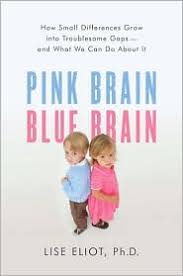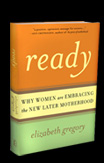A friend of mine recently introduced me to the website pinkstinks.co.uk: a “campaign and social enterprise that challenges the culture of pink which invades every aspect of girls’ lives.†Founded by two “thirty-something†British twin sisters, pinkstinks aims to spark public discussion and influence the media to promote positive gender roles to girls worldwide. Website co-founder Abi Moore, a London-based documentary filmmaker and mother of two sons, grew disgusted by the vapid 24/7 media coverage of Paris Hilton and other celebrities while the achievements of brilliant female scientists and other talented women go virtually unrecognized. Determined to provide more substantive female role models for girls today, Abi teamed up with her sister Emma Moore—a publishing executive and parent of two girls—to start the online venture.
Their appealing website creatively challenges the “culture of pink†and its reductive, restrictive gender stereotyping. On one level, pink is just a color—and if you’re a mother struggling with whether to buy a rose-hued wardrobe for your princess-obsessed daughter, rest assured that a few pink shirts or dresses won’t keep your five-year-old out of the Ivy League down the road. On the other hand, though, “pink†is more than a color: it’s a ubiquitous cultural symbol for a set of prevailing values and messages about what it means to be feminine, for what girls are supposed to care about: beauty, appearance, domesticity, and (before you know it) heterosexual allure.
According to the website, for example, more than 60% of British girls aged 7 to 10 wear lipstick and / or perfume, while over 40% wear eye shadow or eyeliner. Among British girls aged 15-17, 73% say that when they feel bad about themselves, it’s related to their looks or their weight, rather than school work or other abilities. In contrast, pinkstinks motivates girls to develop more meaningful ambitions and privilege brains over beauty.
If you visit the website, be sure to click the box labeled “voices,†which links you to a video of two Swedish pre-teens who took on Toys-R-Us for its “very gendered and sexist Christmas Catalogue.†According to the young investigators, only 14 out of 54 pages of the catalogue portray boys and girls playing with the same toys. Their report is an inspiring example of children’s feminist activism on a global scale—and it may prompt your own kids to question, or at least be aware of, the hidden politics of pink. You can also purchase some alternative merchandise, including a bib or t-shirt emblazoned with the slogan “I’m no Princess.†Just think of how adorable your little one might look in that! And by all means feel to comment with your thoughts below: does pink stink?

 I’m a day late in posting this month’s Mama w/Pen column because, well, this mama has gone back to work. With huge passion for
I’m a day late in posting this month’s Mama w/Pen column because, well, this mama has gone back to work. With huge passion for 







 If I could think of a topic that travels around the conversations of most women I know, the choice to have a child, and when, often lives pretty near the top of the list. Following it comes a litany of concerns: how to juggle career, partnerhood, personal and professional ambitions, and more.Â
If I could think of a topic that travels around the conversations of most women I know, the choice to have a child, and when, often lives pretty near the top of the list. Following it comes a litany of concerns: how to juggle career, partnerhood, personal and professional ambitions, and more. 